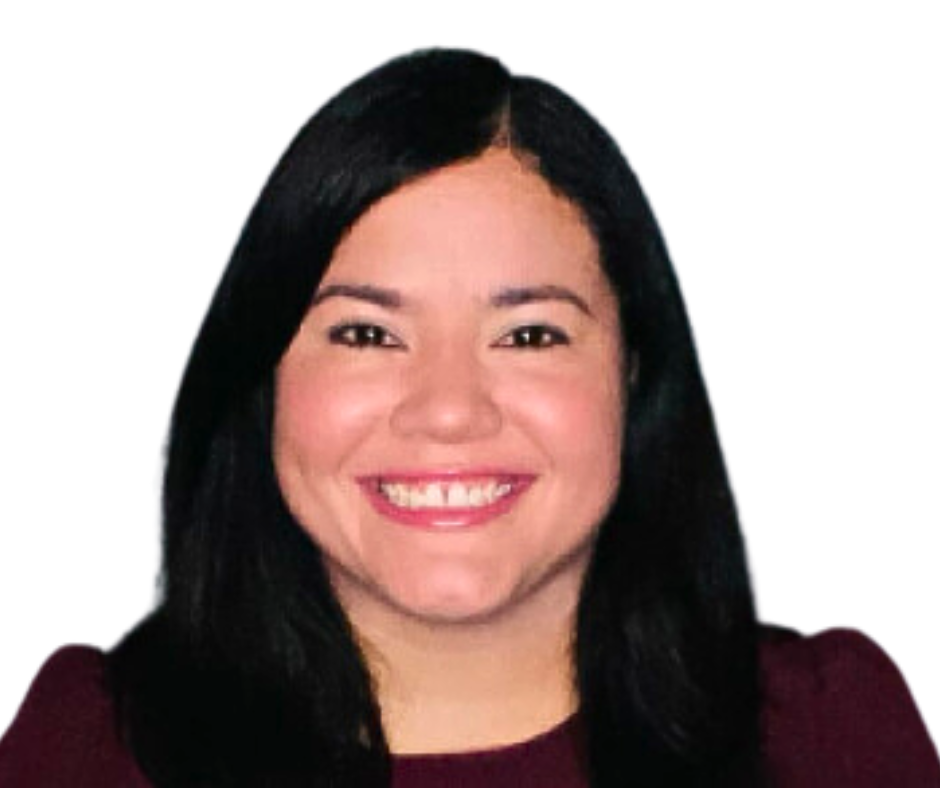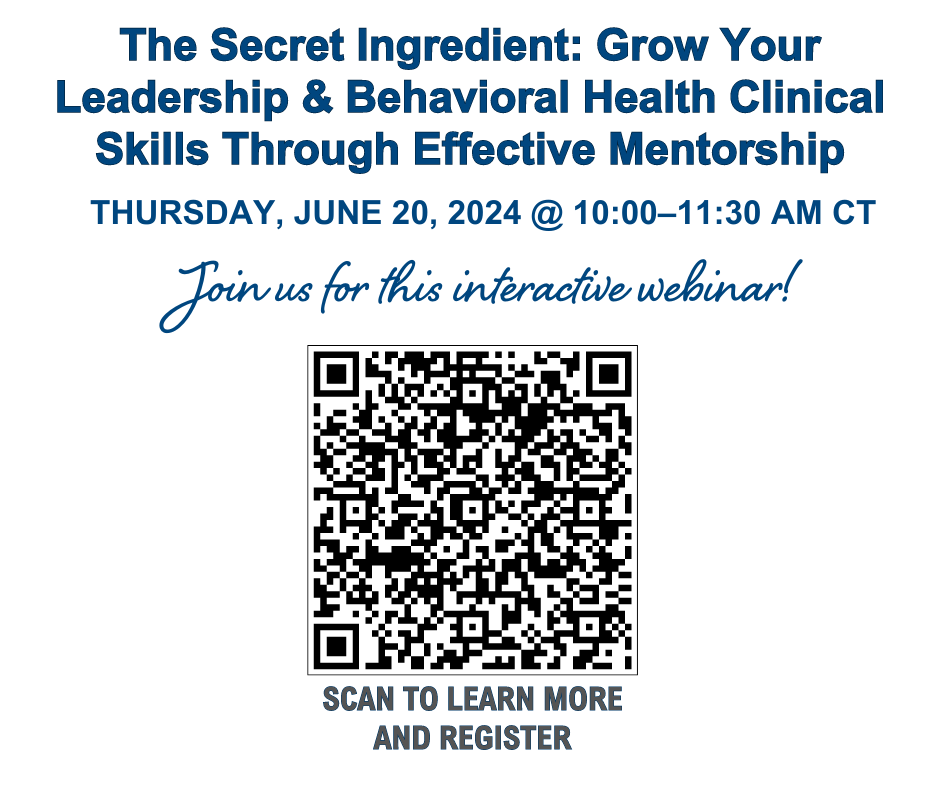
Relapse is a natural part of the recovery journey and can happen at any time of the year. The summer months can present a higher risk of relapse for some people in recovery, as celebrations like the 4th of July, weddings, graduations, and vacations can all introduce relapse triggers.
For some clients with substance use disorder (SUD), relapse can be so debilitating that they may even consider death by suicide as an option (Kinney, 2024). Yet, relapse can also be a powerful teaching tool on the road to recovery. Below are 8 lessons relapse can teach clients:
Helping clients recognize and prepare for summer triggers can empower them to navigate their recovery journey more effectively and embrace the joys of these sunny days with confidence and resilience.
In 1905, philosopher George Santayana said, “Those who do not learn from history are doomed to repeat it.” This post shares eight strategies that we hope you can use to instill hope and help clients who relapse learn from their histories and avoid returning to use.
Kinney, J. Loosening The Grip. (2024). Outskirts Press. Parker, CO.

Mark Sanders, LCSW, CADC, is the Illinois state project manager for the Great Lakes ATTC, MHTTC, and PTTC. He is an international speaker and behavioral health consultant whose presentations and publications have reached thousands throughout the United States, Europe, Canada, West Indies, Lithuania, and Guam. He is the recipient of four lifetime achievement awards, including NAADAC’s prestigious Enlightenment Award, the National Association for Addiction Professionals’ 50th Anniversary Legends Award, the Illinois Certification Board's Professional of the Year Award and Jessica Hayes Lifetime Achievement Award, and the Barbara Bacon Award for outstanding contributions to the social work profession as an alumnus of Loyola University of Chicago.
ICYMI: Read Part 1 of this 2-part blog series!
Acute Stress Disorder (ASD) is a psychological response to a traumatic event that typically arises within a month of the experience. If untreated, ASD can evolve into Post-Traumatic Stress Disorder (PTSD). Additionally, individuals with PTSD are at an increased risk of developing substance use disorders (SUD), as they might use substances to cope with their distress. Effective prevention strategies are essential to stop ASD from escalating into PTSD and SUD. This blog explores these strategies, with a special focus on the cultural aspects that clinicians need to consider.
ASD is a condition that can occur in the immediate aftermath of a traumatic event. The symptoms typically appear within three days to one month following the event and can significantly impair an individual's ability to function. The symptoms of ASD are similar to those of Post-Traumatic Stress Disorder (PTSD) but are of shorter duration. According to the Diagnostic and Statistical Manual of Mental Disorders, the symptoms of ASD are categorized into five groups:
Cultural factors significantly influence how individuals experience and cope with trauma. Clinicians must understand and integrate cultural aspects into their prevention and treatment strategies. This involves understanding cultural attitudes towards mental health, trauma, and substance use and tailoring interventions accordingly. Therapists who are culturally responsive and sensitive to clients’ backgrounds could increase engagement, treatment satisfaction, and health outcomes.
The following reflective questions can guide the clinicians’ exploration to gain a deeper understanding of the client's multicultural factors.
Educating individuals about the symptoms and risks of ASD and PTSD empowers them to recognize early signs and seek help promptly. Awareness campaigns and educational programs can play a significant role in reducing stigma and promoting mental health literacy. Preventing ASD from developing into PTSD and a concurrent SUD involves a multifaceted approach that includes early intervention, effective psychological therapies, robust social support, and cultural sensitivity. By addressing these aspects, mental health professionals can significantly mitigate the long-term impact of trauma and improve the overall well-being of individuals at risk.

American Psychiatric Association (2022). Diagnostic and Statistical Manual of Mental Disorders, 5th edition, Text Revision (DSM-5-TR). American Psychiatric Association Publishing, Washington, DC.
Bryant, R. A. (2011). Acute stress disorder as a predictor of posttraumatic stress disorder: A systematic review. The Journal of Clinical Psychiatry, 72, 233-239. doi: 10.4088/JCP.09r05072blu
Ford, J., Grasso D., Elhai, J., & Courtois, C. (2015). Social, cultural, and other diversity issues in the traumatic stress field. Posttraumatic Stress Disorder. 503–546. doi: 10.1016/B978-0-12-801288-8.00011-X
National Institute of Mental Health. (May 2024). Post-Traumatic Stress Disorder. https://www.nimh.nih.gov/health/topics/post-traumatic-stress-disorder-ptsd
US Department of Veterans Affairs. (2021). Acute stress disorder. https://www.ptsd.va.gov/professional/treat/essentials/acute_stress_disorder.asp


Isa Vélez Echevarria, PsyD, is a Puerto Rican clinical psychologist. She is the Ohio State Project Manager for the Great Lakes Addiction, Mental Health, and Prevention Technology Transfer Centers managed by the Center for Health Enhancement Systems Studies at the University of Wisconsin-Madison. During her pre-doctoral internship at Children’s Institute in Los Angeles, CA, she obtained a certification as Interpersonal Psychotherapy Clinician. She was trained in Trauma-Focused Cognitive Behavioral Therapy and Family Therapy. In addition, she provides telehealth services to communities of color in Massachusetts and Puerto Rico. Her clinical work has focused on culturally tailored and trauma-informed services to Latinx communities.
Mark Sanders, LCSW, CADC, is the Illinois state project manager for the Great Lakes ATTC, MHTTC, and PTTC. He's an international speaker and behavioral health consultant whose presentations and publications have reached thousands throughout the United States, Europe, Canada, West Indies, Lithuania, and Guam. Hes the recipient of four lifetime achievement awards, including NAADAC’s prestigious Enlightenment Award, the National Association for Addiction Professionals’ 50th Anniversary Legends Award, the Illinois Certification Board's Professional of the Year Award and Jessica Hayes Lifetime Achievement Award, and the Barbara Bacon Award for outstanding contributions to the social work profession as an alumnus of Loyola University.
The majority of clients with substance use disorder (SUD) have a concurrent traumatic stress disorder (Mate, 2010). The traumatic stress disorder often precedes the SUD (Wright, 2022). Both disorders have unique triggers. The two disorders in combination can play off each other and lead persons with co-occurring disorders to slip through the cracks (Sanders, 2011). Slipping through the cracks involves going back and forth between SUD treatment, trauma treatment, prisons, jails, and mental health facilities without recovery. This can be exhausting and debilitating.
Ron's post-traumatic stress disorder (PTSD) developed when he returned from war. His symptoms included nightmares, difficulty falling and staying asleep, difficulty concentrating, intrusive thoughts, and flashbacks. Ron quickly discovered that opioids and alcohol temporarily reduced the impact of his PTSD symptoms, and he developed a SUD. Ron continued to use drugs for four years. His co-occurring disorder impacted his ability to sustain relationships and work. Ron completed a residential co-occurring disorders treatment program and remained in dual recovery (SUD and PTSD) for a year. One day he witnessed a bad car accident, and one of the cars in the crash went up in flames. Witnessing this, Ron experienced flashbacks from his days on the battlefield and returned to drug use to cope. Six months later he was readmitted to treatment.
Dana's SUD began when she was 14 years old after experiencing childhood sexual abuse. Through her teen years she primarily utilized marijuana, alcohol, and Xanax to medicate PTSD. By age 21 she started using crack cocaine and supported her SUD with money earned through prostitution and theft. After several arrests, Dana was referred to a drug court program that she successfully completed and was soon linked with 12-Step groups to maintain her recovery. Two years into recovery, Dana started a romantic relationship. In recovery, sex with her partner triggered traumatic memories of childhood sexual abuse, and shame returned. Dana returned to cocaine use, theft, and prostitution and was re-arrested.
What if Ron and Dana had received help soon after their early traumatic experiences? Would they have developed PTSD and SUD? It is said that an ounce of prevention is more important than a pound of cure. This post focuses on strategies to prevent acute stress disorders from becoming PTSD and increasing the risk of developing a SUD.
ASD refers to the initial traumatic stress symptoms that arise immediately after a traumatic event. PTSD refers to the long -term aftermath of trauma. With ASD, the traumatic stress symptoms last less than a month. PTSD is diagnosed when the traumatic stress symptoms last a month or longer. Both conditions can affect social and occupational functioning, with PTSD having an impact for months or years and increasing the risk of an SUD (SAMHSA TIP 57, 2014). As it pertains to treatment, ASD often focuses on managing and alleviating symptoms during the acute phase. PTSD often involves more long-term therapeutic interventions.
Here are several recommendations for helping clients with ASD. Emphasizing client voice and choice throughout counseling is crucial (SAMHSATIP 57, 2014). These suggestions can be shared with clients to support their needs.
For years SUDs and traumatic stress disorders were addressed in separate silos. June is PTSD awareness month. Let’s make a commitment to address the conditions in an integrated manner.

American Psychiatric Association (2022).Diagnostic and Statistical Manual of Mental Disorders, 5th edition, Text Revision (DSM-5-TR). American Psychiatric Association Publishing, Washington, DC, pp 313-319
Frankl, V. (2014). Man's Search for Meaning. Beacon Press. Boston, MA.
Herman, J. (2015). Trauma and Recovery. Basic Books. New York, NY.
Marich, J. (2023). Trauma and the 12 Steps-The Workbook: Exercises and Meditations For Addictions and Trauma Recovery. North Atlantic Books. Berkeley, CA.
Mate, G. (2010). In The Realm of Hungry Ghosts: Close Encounters with Addiction. North Atlantic Books. Berkeley, CA.
Quinn, P. Art Therapy in The Treatment of Addiction and Trauma. Jessica Kingsley Publishers. London England, UK
SAMHSA TIP 57. (2014). Trauma-Informed Care in Behavioral Health Services.store.samhsa.gov
Sanders, M. (2011). Slipping Through the Cracks: Intervention Strategies for Clients with Multiple Addictions and Disorders. Health Communications Inc. Deerfield Beach, FL.
Wright, E. (2022). The Connection Between Childhood Trauma and Substance Abuse: Heal from The Emotions to Overcome Addiction. Self-published, Evie Wright.


Isa Vélez Echevarria, PsyD, is a Puerto Rican clinical psychologist. She is the Ohio State Project Manager for the Great Lakes Addiction, Mental Health, and Prevention Technology Transfer Centers managed by the Center for Health Enhancement Systems Studies at the University of Wisconsin-Madison. During her pre-doctoral internship at Children’s Institute in Los Angeles, CA, she obtained a certification as Interpersonal Psychotherapy Clinician. She was trained in Trauma-Focused Cognitive Behavioral Therapy and Family Therapy. In addition, she provides telehealth services to communities of color in Massachusetts and Puerto Rico. Her clinical work has focused on culturally tailored and trauma-informed services to Latinx communities.
Mark Sanders, LCSW, CADC, is the Illinois state project manager for the Great Lakes ATTC, MHTTC, and PTTC. He's an international speaker and behavioral health consultant whose presentations and publications have reached thousands throughout the United States, Europe, Canada, West Indies, Lithuania, and Guam. Hes the recipient of four lifetime achievement awards, including NAADAC’s prestigious Enlightenment Award, the National Association for Addiction Professionals’ 50th Anniversary Legends Award, the Illinois Certification Board's Professional of the Year Award and Jessica Hayes Lifetime Achievement Award, and the Barbara Bacon Award for outstanding contributions to the social work profession as an alumnus of Loyola University.

Once upon a time in a bustling substance use disorders (SUD) treatment program in Chicago, there was a seasoned therapist named Keitha Bevly. She had been navigating the trenches of SUD treatment care for over a decade, armed with experience and a passion for helping. One day, a fresh-faced chemical dependency counselor named Jamelia was assigned to work with Keitha. Jamelia was eager but overwhelmed by the complexities of clinical work and the emotional weight of the cases.
Keitha took Jamelia under her wing, teaching her the techniques of counseling and how to handle the emotional rollercoaster that often accompanies this challenging work. Under her guidance, Jamelia not only honed her therapeutic skills, she also learned the invaluable art of self-care—a crucial component for longevity working in this field—which has led to a 23-year career as a leader in the field where she has shared her passion and knowledge with practitioners across the globe.
This story illustrates the profound impact mentorship can have in the helping professions. Mentorship goes beyond mere teaching; it is a transformative journey shared by mentor and mentee Through our own research, individual experiences, and feedback and research gathered from other experts in the field, we've identified four main categories of professional growth greatly impacted by effective mentorship, especially for those working in counseling, recovery support services, and the broader scope of behavioral healthcare.
Building Competence
Mentorship provides a safe space for less experienced professionals to learn and practice new skills under the supervision of a seasoned practitioner. Mentors provide expert guidance, practical experience, and constructive feedback, helping you to successfully navigate the unique challenges of helping professions. Providing hands-on guidance and sharing their expertise accelerates a mentee’s skill development and helps them build confidence and competence when practicing in real-world situations.
Mentors have helped me in direct practice and when I became a behavioral health entrepreneur mentors helped me grow my business.
- Paul Jordan, Executive Director, Uptown DUI Services
Confidence
You have a very important job as a helping professional. You help others navigate life and death situations. The high-stakes pressures of helping professions can lead to anxiety and fear of mistakes. A mentor inspires self-confidence by recognizing your potential and encouraging you to see and believe in your own abilities. Mentors help us to see past immediate situations and trust our own capabilities.
I don't care what you do for a living, if you do it well, I'm sure there is someone cheering for you or showing you the way. A mentor.
- Denzel Washington
A mentor is someone who helps you see the hope within yourself.
- Oprah Winfrey
Career Advancement
Effective mentorship opens doors. Mentors help mentees to network, identify opportunities for advancement, and often advocate on their behalf, accelerating career progression in ways that would be challenging on one's own. When done well, mentoring relationships are also mutually beneficial, and each person inspires the other in different ways and at different times.
If I have seen further, it is by standing on the shoulders of giants.
- Sir Isaac Newton
My growth, my perspective, and my worldview are expanded because of mentorship. Developing the next generation is my Why. I have mentored others who now mentor me.
- Lonnetta Albright, President, Forward Movement Inc.
When I was getting started in my career, I sought out the top experts in several areas of the addictions profession including, the top researchers, pharmacologists, medication-assisted treatment doctors, and treatment specialists. I contacted each one and said to them, I think I can learn from you. That mentorship really helped launch my career.
- William White, Addictions Historian and Senior Research Consultant
Continuity of Care
I have often said, show me a successful person and chances are they have benefitted from mentorship in their work and life (Sanders). It’s important that experienced helpers share their knowledge and training with those who are just entering the field. By mentoring the next generation of leaders, we can collectively ensure the values of compassion, empathy, and patient-centered care are passed on. This professional continuity helps us grow as clinicians and as people, and more importantly, it supports the quality of care provided to those we serve.
Today, most of the mentors are supervisors and directors. When I was becoming a counselor, our mentors were experienced counselors who took us under their wings and helped guide us toward greater clinical effectiveness.
- Denise Eligan, Grant Writer
In Odyssey, Homer shares the story of Telemachus, who is deeply touched by what he sees in a man named Mentor. Telemachus goes to Mentor for help with his personal growth and their relationship is filled with challenges, struggle, and joy. This is the nature of many mentoring relationships with the ultimate goal being a mutually beneficial relationship leading to growth.
The benefits of mentorship in helping professions are far-reaching, impacting not only the individuals directly involved but also the larger community they serve. Whether you’re a seasoned professional considering taking on a mentorship role, or a newcomer hoping to navigate the complexities of our field, remember that mentorship can be a key to unlocking potential and propagating the cycle of learning and growth. Mentorship is not just about building a career; it’s about building a community of skilled, compassionate providers ready to make a difference.
My growth, my perspective, and my worldview are expanded because of mentorship. Developing the next generation is my Why. I have mentored others who noI have sought out mentorship to help me explore my gifts. I sought mentorship from Bob Carty because of his mastery of studying and going deeper into how we see our clients. Elizabeth Vastine mentored me on how to get spiritually and emotionally centered prior to facilitating healing circles and Luis Rodriguez taught me the power of connecting with the ancestors when we are doing sacred work.w mentor me.
- Carlos Rodriguez, Program Director, Westcare Illinois
Let us strive to be like Keitha, William, Lonnetta, Carlos, Paul, and Denise, for in nurturing our colleagues, we are ultimately nurturing the very heart of our profession. Join us for a deeper dive into the mentorship relationship in behavioral health by attending our upcoming webinar Enhance Your Leadership and Clinical Skills in Behavioral Health Through Effective Mentorship on June 30 from 10–11:30 a.m. CT/11 a.m.–12:30 p.m. ET.
Let's create ripples that turn into waves of positive change in the helping professions.



Jamelia Hand, MHS, CADC, CODP, is a seasoned opioid addiction consultant, speaker, trainer, and author within the SUD/OUD healthcare sector. Ms. Hand maximizes her extensive executive experience to deliver compelling keynote speeches, engaging workshops, and dynamic training sessions that motivate and inspire action in addiction and mental health treatment, service delivery, overdose prevention, and staff motivation. Her expertise is highlighted in national publications, and she has held significant roles such as Deputy Director in Illinois, VP of Reentry, and leadership positions in global addiction medication and technology companies, enhancing access to quality care nationwide. For more information, visit vantageclinicalconsulting.com.
Mark Sanders, LCSW, CADC, is the Illinois state project manager for the Great Lakes ATTC, MHTTC, and PTTC. He's an international speaker and behavioral health consultant whose presentations and publications have reached thousands throughout the United States, Europe, Canada, West Indies, Lithuania, and Guam. Hes the recipient of four lifetime achievement awards, including NAADAC’s prestigious Enlightenment Award, the National Association for Addiction Professionals’ 50th Anniversary Legends Award, the Illinois Certification Board's Professional of the Year Award and Jessica Hayes Lifetime Achievement Award, and the Barbara Bacon Award for outstanding contributions to the social work profession as an alumnus of Loyola University.